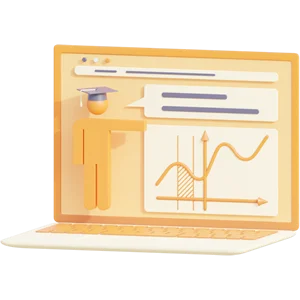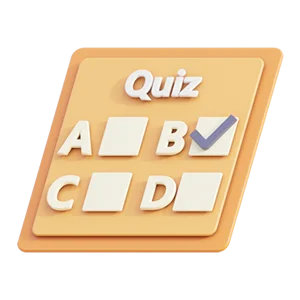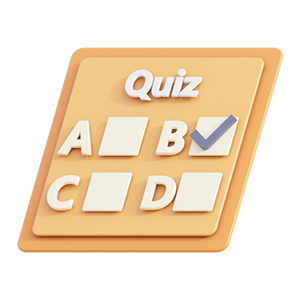Test Bank - Medical-Surgical Nursing: Concepts for Interprofessional Collaborative Care 9th edition Donna Ignatavicius| M. Linda
Test Bank - Medical-Surgical Nursing: Concepts for Interprofessional Collaborative Care 9th edition Donna Ignatavicius| M. Linda
Chapter 01: Overview of Professional Nursing Concepts for Medical-Surgical Nursing
Chapter 02: Overview of Health Concepts for Medical-Surgical Nursing
Chapter 03: Common Health Problems of Older Adults
Chapter 04: Assessment and Care of Patients with Pain
Chapter 05: Genetic Concepts for Medical-Surgical Nursing
Chapter 06: Rehabilitation Concepts for Chronic and Disabling Health Problems
Chapter 07: End-of-Life Care
Chapter 08: Concepts of Emergency and Trauma Nursing
Chapter 09: Care of Patients with Common Environmental Emergencies
Chapter 10: Concepts of Emergency and Disaster Preparedness
Chapter 11: Assessment and Care of Patients with Fluid and Electrolyte Imbalances
Chapter 12: Assessment and Care of Patients with Acid-Base Imbalances
Chapter 13: Infusion Therapy
Chapter 14: Care of Preoperative Patients
Chapter 15: Care of Intraoperative Patients
Chapter 16: Care of Postoperative Patients
Chapter 17: Inflammation and Immunity
Chapter 18: Care of Patients with Arthritis and Other Connective Tissue Diseases
Chapter 19: Care of Patients with HIV Disease
Chapter 20: Care of Patients with Hypersensitivity (Allergy) and Autoimmunity
Chapter 21: Cancer Development
Chapter 22: Care of Patients with Cancer
Chapter 23: Care of Patients with Infection
Chapter 24: Assessment of the Skin, Hair, and Nails
Chapter 25: Care of Patients with Skin Problems
Chapter 26: Care of Patients with Burns
Chapter 27: Assessment of the Respiratory System
Chapter 28: Care of Patients Requiring Oxygen Therapy or Tracheostomy
Chapter 29: Care of Patients with Noninfectious Upper Respiratory Problems
Chapter 30: Care of Patients with Noninfectious Lower Respiratory Problems
Chapter 31: Care of Patients with Infectious Respiratory Problems
Chapter 32: Care of Critically Ill Patients with Respiratory Problems
Chapter 33: Assessment of the Cardiovascular System
Chapter 34: Care of Patients with Dysrhythmias
Chapter 35: Care of Patients with Cardiac Problems
Chapter 36: Care of Patients with Vascular Problems
Chapter 37: Care of Patients with Shock
Chapter 38: Care of Patients with Acute Coronary Syndromes
Chapter 39: Assessment of the Hematologic System
Chapter 40: Care of Patients with Hematologic Problems
Chapter 41: Assessment of the Nervous System
Chapter 42: Care of Patients with Problems of the CNS: The Brain
Chapter 43: Care of Patients with Problems of the CNS: The Spinal Cord
Chapter 44: Care of Patients with Problems of the Peripheral Nervous System
Chapter 45: Care of Critically Ill Patients with Neurologic Problems
Chapter 46: Assessment of the Eye and Vision
Chapter 47: Care of Patients with Eye and Vision Problems
Chapter 48: Assessment and Care of Patients with Ear and Hearing Problems
Chapter 49: Assessment of the Musculoskeletal System
Chapter 50: Care of Patients with Musculoskeletal Problems
Test Bank - Medical-Surgical Nursing: Concepts for Interprofessional Collaborative Care 9e 1
424
435
441
445
454
461
471
481
489
497
506
512
520
527
549
557
568
575
587
591
598
605
614
618
Chapter 51: Care of Patients with Musculoskeletal Trauma
Chapter 52: Assessment of the Gastrointestinal System
Chapter 53: Care of Patients with Oral Cavity Problems
Chapter 54: Care of Patients with Esophageal Problems
Chapter 55: Care of Patients with Stomach Disorders
Chapter 56: Care of Patients with Noninflammatory Intestinal Disorders
Chapter 57: Care of Patients with Inflammatory Intestinal Disorders
Chapter 58: Care of Patients with Liver Problems
Chapter 59: Care of Patients with Problems of the Biliary System and Pancreas
Chapter 60: Care of Patients with Malnutrition: Undernutrition and Obesity
Chapter 61: Assessment of the Endocrine System
Chapter 62: Care of Patients with Pituitary and Adrenal Gland Problems
Chapter 63: Care of Patients with Problems of the Thyroid and Parathyroid Glands
Chapter 64: Care of Patients with Diabetes Mellitus
Chapter 65: Assessment of the Renal/Urinary System
Chapter 66: Care of Patients with Urinary Problems
Chapter 67: Care of Patients with Kidney Disorders
Chapter 68: Care of Patients with Acute Kidney Injury and Chronic Kidney Disease
Chapter 69: Assessment of the Reproductive System
Chapter 70: Care of Patients with Breast Disorders
Chapter 71: Care of Patients with Gynecologic Problems
Chapter 72: Care of Patients with Male Reproductive Problems
Chapter 73: Care of Transgender Patients
Chapter 74: Care of Patients with Sexually Transmitted Diseases
Test Bank - Medical-Surgical Nursing: Concepts for Interprofessional Collaborative Care 9e 2
Chapter 01: Overview of Professional Nursing Concepts for Medical- Surgical Nursing
MULTIPLE CHOICE
1. A nurse wishes to provide client-centered care in all interactions. Which action by the nurse best
demonstrates this concept?
a. Assesses for cultural influences affecting health care
b. Ensures that all the clients basic needs are met
c. Tells the client and family about all upcoming tests
d. Thoroughly orients the client and family to the room
ANS: A
Competency in client-focused care is demonstrated when the nurse focuses on communication, culture, respect, compassion, client education, and empowerment. By assessing the effect of the clients culture on health care,
this nurse is practicing client-focused care. Providing for basic needs does not demonstrate this competence. Simply telling the client about all upcoming tests is not providing empowering education. Orienting the client
and family to the room is an important safety measure, but not directly related to demonstrating client-centered
care. DIF: Understanding/Comprehension REF: 3
KEY: Patient-centered care| culture MSC: Integrated Process: Caring
NOT: Client Needs Category: Psychosocial Integrity
2. A nurse is caring for a postoperative client on the surgical unit. The clients blood pressure was 142/76 mm
Hg 30 minutes ago, and now is 88/50 mm Hg. What action by the nurse is best?
a. Call the Rapid Response Team. b. Document and continue to monitor. c. Notify the primary care provider. d. Repeat blood pressure measurement in 15 minutes.
ANS: A
The purpose of the Rapid Response Team (RRT) is to intervene when clients are deteriorating before they
suffer either respiratory or cardiac arrest. Since the client has manifested a significant change, the nurse should
call the RRT. Changes in blood pressure, mental status, heart rate, and pain are particularly significant. Documentation is vital, but the nurse must do more than document. The primary care provider should be
notified, but this is not the priority over calling the RRT. The clients blood pressure should be reassessed
frequently, but the priority is getting the rapid care to the client. DIF: Applying/Application REF: 3
KEY: Rapid Response Team (RRT)| medical emergencies
MSC: Integrated Process: Communication and Documentation
NOT: Client Needs Category: Physiological Integrity: Physiological Adaptation
3. A nurse is orienting a new client and family to the inpatient unit. What information does the nurse provide to
help the client promote his or her own safety?
a. Encourage the client and family to be active partners. b. Have the client monitor hand hygiene in caregive
Preview document (3 van de 624 pagina's)
Voordelen van Knoowy
€ 26,80
 Niet tevreden? Geld terug
Niet tevreden? Geld terug
 Document direct te downloaden
Document direct te downloaden
 € 0,50 korting bij betalen met saldo
€ 0,50 korting bij betalen met saldo
-
 Ontvang gratis oefenvragen bij document
Ontvang gratis oefenvragen bij document

Specificaties
- School: Walden University
- Opleiding: ATI med-surg
- Vaknaam: Medical-Surgical Nursing: Concepts for Interprofessional Collaborative Care 9th edition
- Alle documenten voor dit vak ›
- Studiejaar: 2024/2025
Document
- Rubriek: Tentamens
- Gemaakt op: 04-08-2024
- Type: .pdf
- Pagina's: 624
- Taal: English
Tags
Verkoper
Hi, I'm a doctor by profession and my documents are 100% guaranteed to help you Ace in your studies, my goal is to empower and help you in your career. I represent more professional nursing specialties and other courses, that can be of great help for every student. Above all, I'm a friendly person, so don't hesitate to contact me via Knoowy chat. Good luck and success in your studies!!
Verdienen aan je samenvattingen?
Vakken van ATI med-surg - Walden University
Meer ATI med-surg ›medical surgical nursing 7 th edition by linton test bank ati comprehensive ati general questions ati lpn comprehensive predictor ati med-surg proctored exam ati nutrition assessment exam 2024 complete with 100% correct answers ati pn comprehensive predictor form b ati pn comprehensive predictor form b ati rn comprehensive predictor ati rn medical-surgical atls post test 4 latest versions atls post test complete exam 2023 basic and clinical pharmacology 16th edition custom- mental health important topics foundations for population health in community public health nursing 5 th edition stanhope chapter 1-32 test bank med 105 medical surgical nursing ms4 hesi med surg final exam nursing prophecy medical surgical telemetry rn ati concept-based assessment test bank for lewis&039;s medical-surgical nursing: assessment and management of clinical problems 11th edition by mariann m. harding, jeffrey kwong, dottie roberts, debra hagler, courtney reinisch chapters 1-68 test-bank for lewis medical surgical nursing 11th walden university nurs 6521 wgu c838 managing cloud security
Al meer dan 146.000 tevreden studenten
-
Lisanne Buckers
Knoowy is voor mij de perfecte service om een centje bij te verdienen! Die samenvattingen moet ik sowieso maken, dus waarom ze niet uploaden en wat bijverdienen?
-
EBELMANS
Prima ervaring, vlotte betaling, alles vlot kunnen downloaden Zeker voor herhaling vatbaar.
-
Jen DM
Jullie website is top! Het heeft me al veel geholpen. Zeker omdat ik thuis studeer!
-
jennahlamont
Super handig, echt een goeie site. Ik ga dit in de toekomst vaker gebruiken!
-
Pinjeu
Prima service, snelle afhandeling. Ik ga hiervan gebruik maken gedurende mijn hele studie.
-
nijhuis
Bij Knoowy vind ik notities van vakken die mij helpen bij het leren.
-
FranCeulemans
Handige bron om samenvattingen te vinden, vorige beoordelingen helpen hier zeker bij!
-
sandervdellen
Knoowy is een zeer goed platform voor samenvattingen en ik zou het aanraden.
Eerder bekeken door jou
 Actie: ontvang 10% korting bij aankoop van 3 of meer items!
Actie: ontvang 10% korting bij aankoop van 3 of meer items!
Actie: ontvang 10% korting bij aankoop van 3 of meer items!








